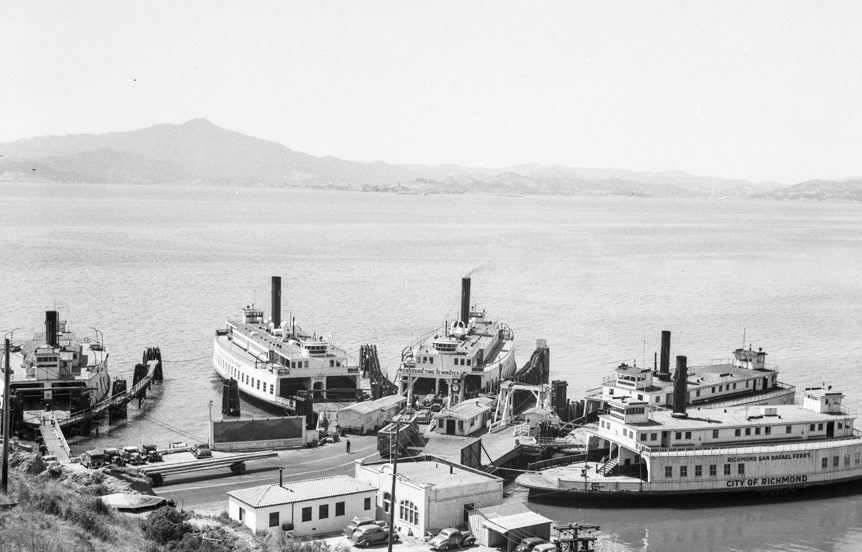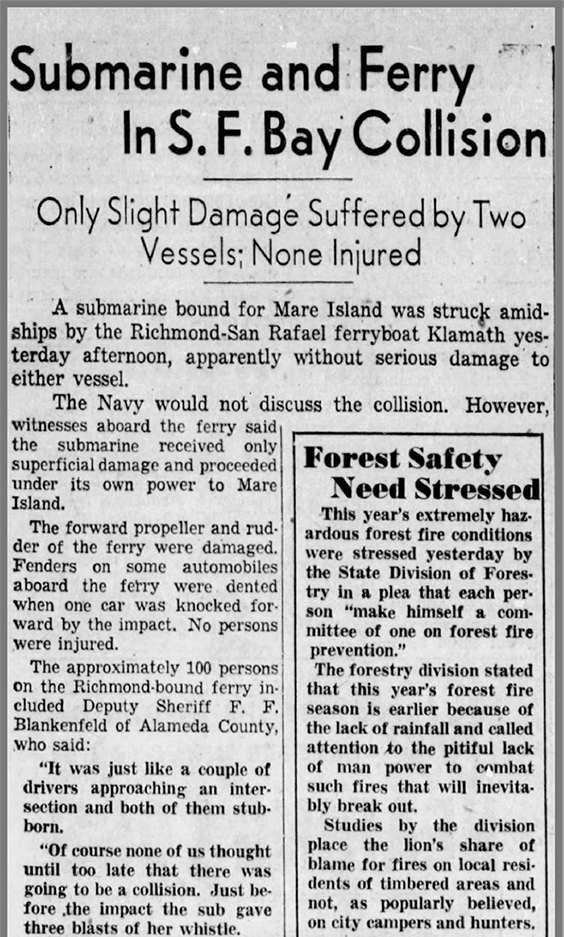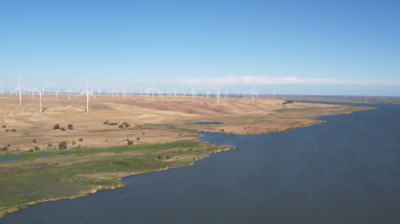A “Sub”-Par Day – Klamath Rams WWII Submarine, During WWII
The Klamath is nearly 100 years old and has sailed through many turbulent times (get it, cause boats?) but perhaps none more so than one sunny afternoon on the bay in the middle of World War II.
July 1, 1944 was much like any other day for the Klamath. She zigzagged across the water transporting passengers and cars between Point Molate in Richmond and San Quentin before the Richmond-San Rafael bridge would eventually put her out of business.
That day, the Klamath was carrying 120 people and 30 vehicles on the last run of the afternoon at about 4:30 pm. The route was going smoothly, as it usually did, but off in the distance passengers noticed something very unusual surfaced above the waves: an enormous submarine.

The USS Trepang (SSN-657) was what they saw. The brand new, top-of-the-line Trepang was one of the Navy’s Gato-class submarines and nearly a football field long. The Trepang had just been launched from its shipyard in Mare Island and on the day in question the Trepang was undergoing sea trials piloted by one the navy’s best: the legendary Rear Admiral Roy M. Davenport and his crew. By the end of the war Davenport would be the first sailor to receive five Navy Crosses and become one of the most decorated submarine captains in US history.
The Ferry travelers were fascinated. One eyewitness recalled that, “Everyone was lining the rail, watching the sub. … Passengers were pointing out its features and the children were getting a big thrill out of it being so close.” But soon the initial surprise was replaced by anxiety as the sub inched closer and closer.
In a matter of minutes ferry passengers and the crew on the Trepang’s deck could see each other clearly. People retreated from the Klamath’s railings and one mother even hid herself and her child behind a bulkhead. The mate and pilot on the Klamath finally ordered a full reverse but it was too late, the boat’s momentum kept it surging closer to toward the sub. And finally…BOOM.
The two ships collided, but luckily no one was hurt. The Trepang boasted a nice-ferry-sized dent in its port side and the Klamath made its way home with forward rudder damage, a broken front propeller, and a bruised ego.
The crash made headlines across the Bay Area with many wondering what happened. Why didn’t the Klamath retreat any earlier? The Oakland Tribune pondered that this was, “the first – and probably only – encounter between a warrior submarine and a lumbering ferry boat.”
These questions would go mostly unanswered. The Navy declined to comment on the incident leading to speculation about spies and secret wartime missions.

Meanwhile, the Klamath reported (and was later confirmed in Davenport’s biography) that it didn’t reverse sooner because its captain had simply “left his post to change his pants.” Sadly, the full story behind that odd fact seems to be lost to the ages.
Colorful stories like this one from the Klamath’s history, a history so intertwined with that of the Bay Area itself, are part of the reason the Bay Area Council can’t wait to share the Klamath with this region.
We’re so excited welcome the Klamath back to service in San Francisco and open a new era at Pier 9.
To learn more about booking your event on the Historic Klamath visit www.historicklamath.com.





